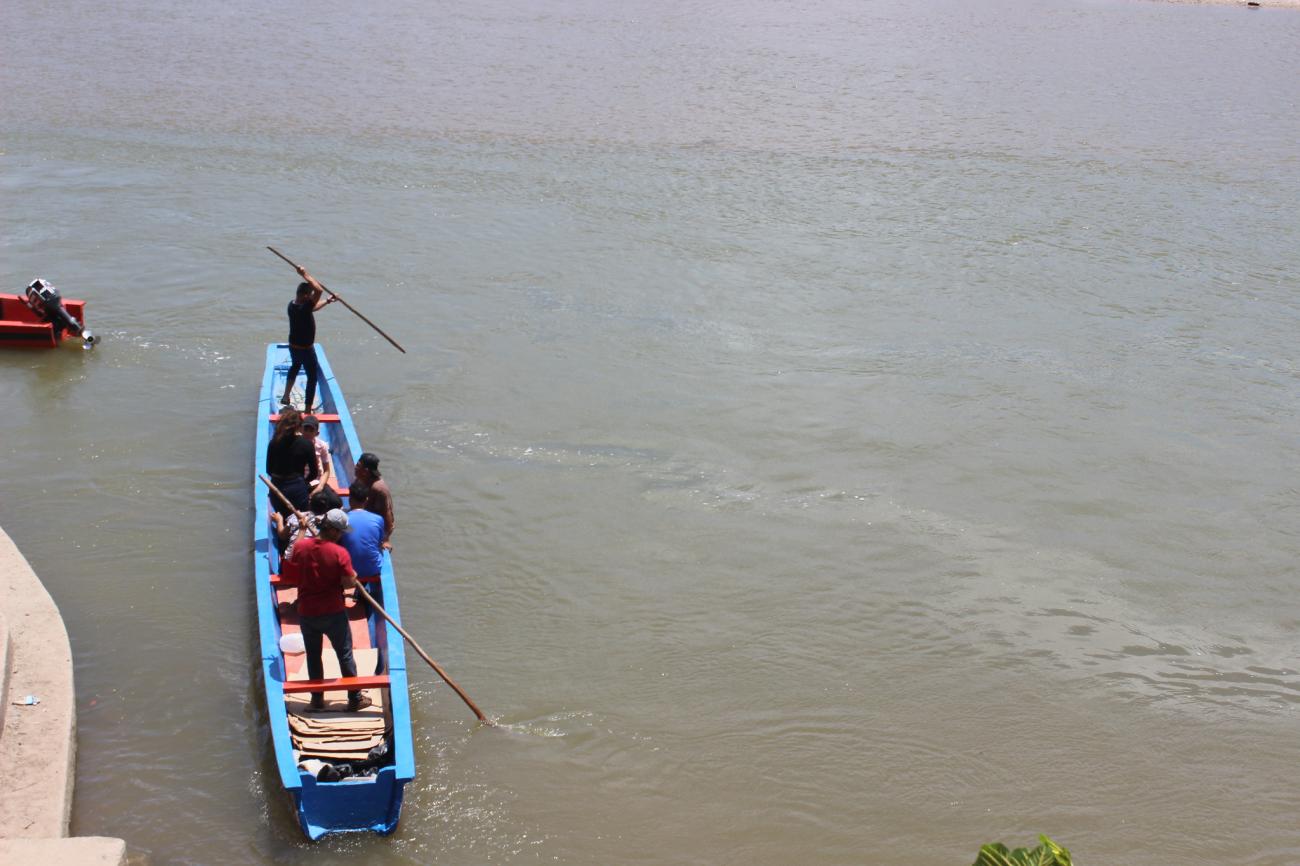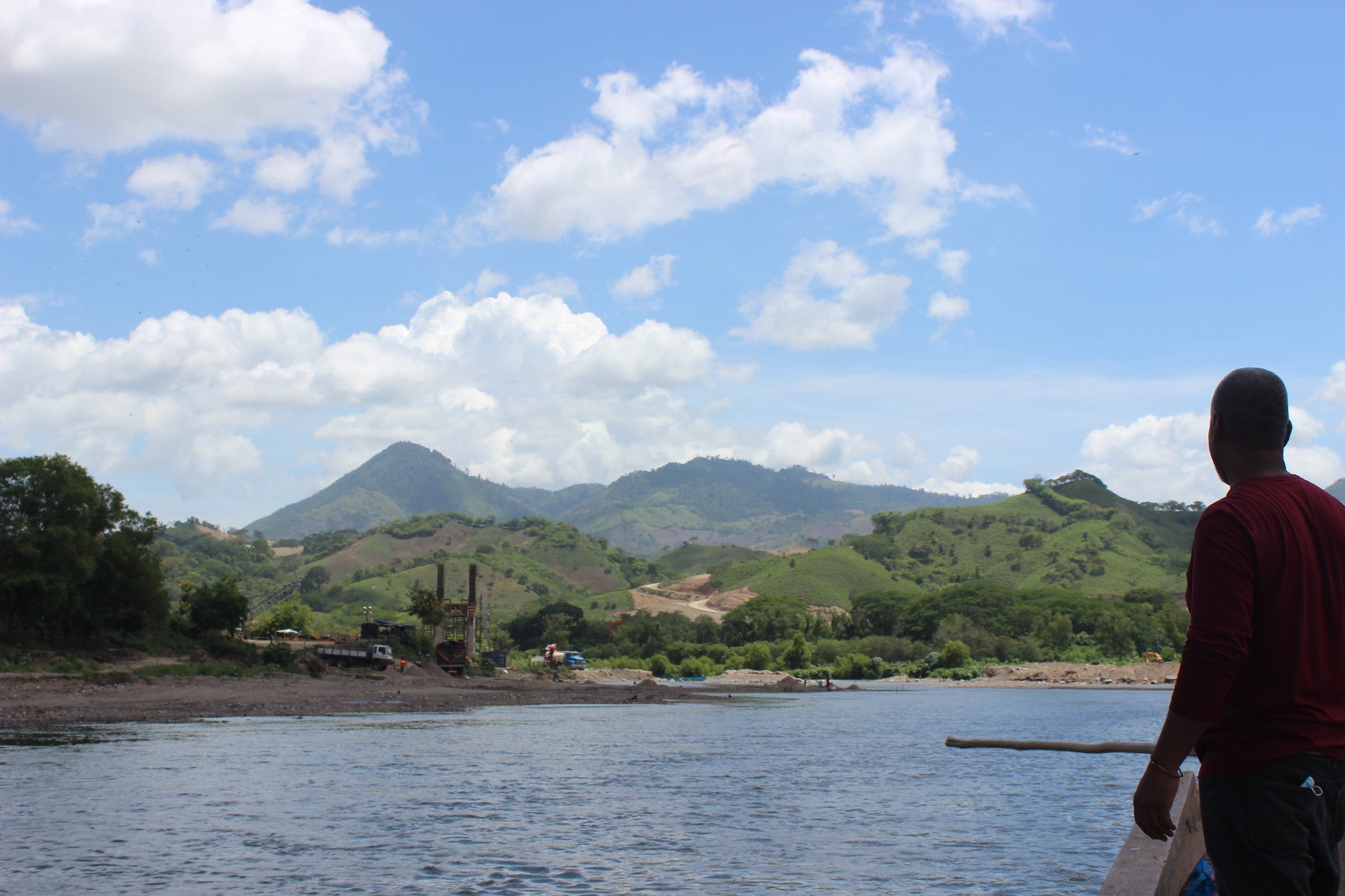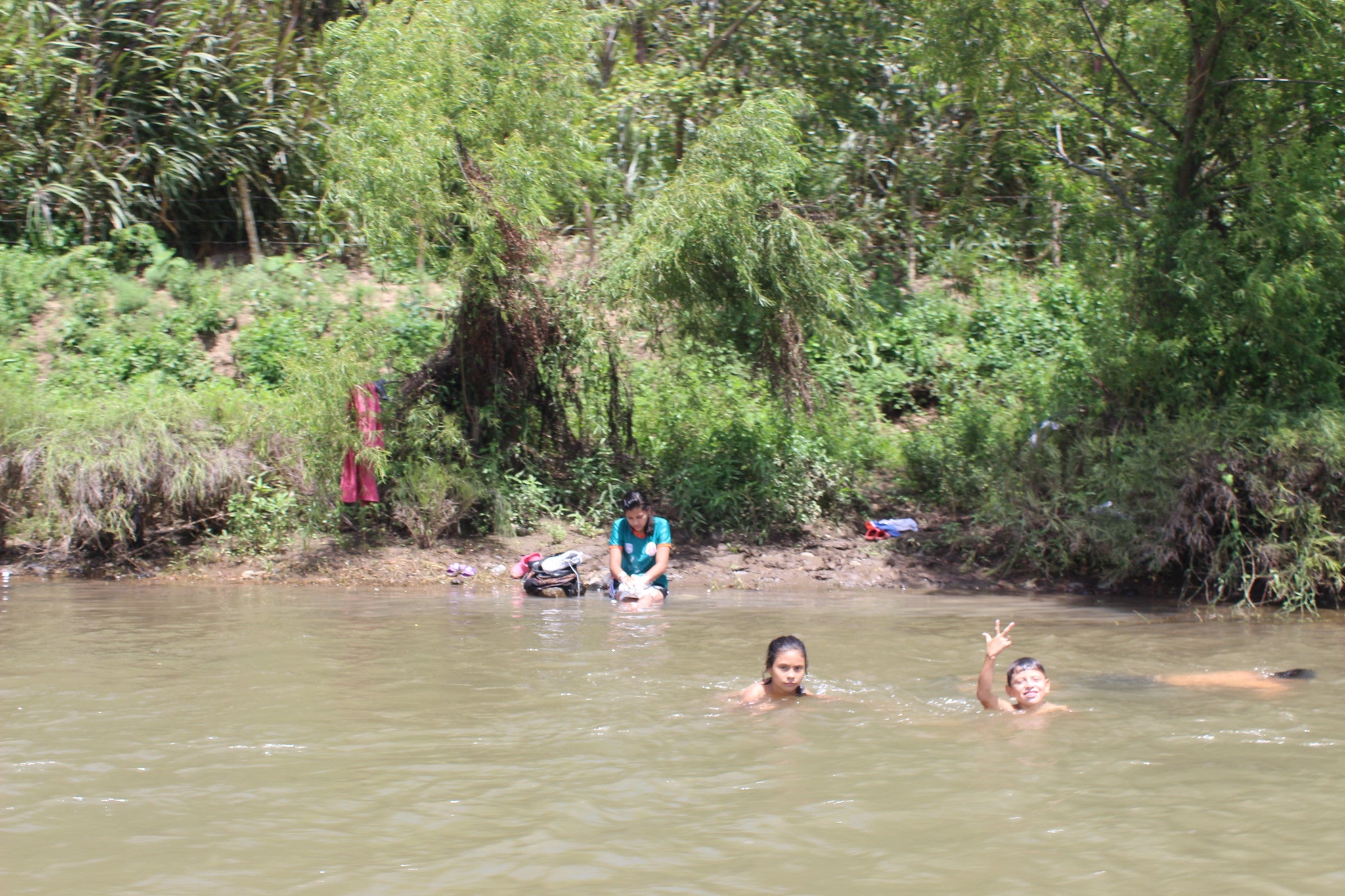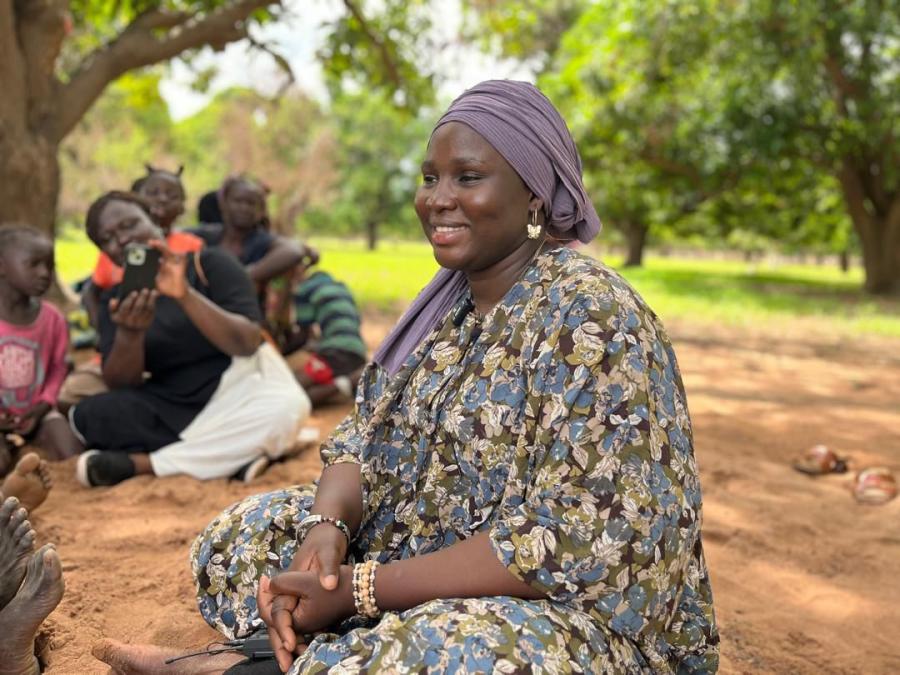
By Teresita Orozco (CS STAFF)
Oil and minerals such as gold and diamonds have been the cause of conflicts worldwide as the globalized world covets them and values them at high costs. But these resources, in contrast to life-sustaining elements such as water, cannot be compared. Indigenous Peoples of the world are more than aware of the value of water, as water is life. Indigenous stewardship does not exploit natural resources but conserves them for the common good since together they make up the balance of life.
Regardless of whether water is essential for the existence of the rich or poor, high prices have been paid to preserve this vital liquid. Today, water is traded as a commodity on the stock market, which impacts those most disadvantaged and discriminated against. Indigenous and campesino Peoples are the most aware of the importance and spiritual connections of natural resources to maintain the balance of existence and have had to pay even with their own lives for the defense of these precious resources.

Voices such as those of Berta Cáceres (Lenca) in Honduras, Zezico Rodrigues Guajajara (Guajajara) in Mexico, Ari Uru-Eu-Wau-Wau (Uru-Eu-Wau-Wau) in Brazil, have been muted for being loud, uncomfortable, and constant. With their strength and self-determination, they have been barriers of thorns. Faced with megaprojects that invade, steal, and privatize Indigenous territories to only exploit their natural resources and then return them into commodities with stamps and prices.
Today, many Peoples in the world have lost their right to access their own natural resources, including their land, and the colonial governments and large companies have invaded their territory, taken away their right to water, and privatized it for the benefit of a few. “Water is a living element, with it we can not only have life, but also quality of life. Without it poverty haunts us everywhere. However, this does not matter to the businessmen or the governments. They have cut off access to water. They have put it in tubes to sell it to the people. What once belonged to us, now we have to buy it and this is summarized in further impoverishment. They take over our lands where the water sources are, divert their flows, put dams on them, and have destroyed many slopes because they have also cut down their oxygen lungs (forests). Many times this forces us to sell because without water we will not be able to work or live off the land, ” says Tomasa Tercero (Chorotega) from northern Nicaragua.
Dixon Morales, Garífuna leader of Honduras informs us that the 47 Garífuna communities on the Atlantic Coast of Honduras have a very complex problem related to the availability of water in their territory due to climate change and the lack of will of the Honduran government to respect, protect, and fulfill the rights of the Garífuna people. “A large part of the communities do not have a water distribution system. They do not have a community dam, a micro-watershed management plan, a distribution system, nor a system to be able to consume potable or clean water. The few communities that do have a distribution network system are completely deficient, with obsolete pipes and when tropical storms such as Iota and Eta occur, large amounts of money have to be spent for repair and to restore service again, which is not necessarily free for the communities either,” he expressed.
In Panama, Anelimo Merry López, Secretary of Information and Communication of the General Congress of Kuna Yala, highlights: “Some 38 communities in the region live on islands. Not all the islands have aqueducts, some have them because they are in proximity to the coasts. There is no water treatment as it should be and drinking water is consumed as is. During the dry season, communities have been affected because most of them are supplied with the vital liquid through wells and rivers, but in the summer season, these dry up and the communities have to buy water or store it in times of abundance. Getting water in winter is also dangerous due to the flooding of the rivers, these are polluted as well.” Merry emphasizes the little political will of their governments to meet the demand for water in their communities.
Merry adds that “some of our communities at first said ‘we don't need an aqueduct, I love going to the rivers to get water,’ but apparently that idea has prevailed to some government authorities. People do not want the aqueduct, but this is not absolutely true. It is not the majority of communities that think this way. When applications and projects are written, everything remains at a standstill, because the bureaucracy makes us process and fill out hundreds of documents and as authorities change, everything starts from scratch,” denounces the Secretary of Communications of the Congress Guna Yala. By not having water in the communities, they have to incur expenses to transport it or to buy bottled water. Due to tourism, water consumption has increased, causing pollution. "Now it definitely creates a problem, because these plastics that they bring do not leave the regions, they remain in the regions and there is also no solid waste treatment system and that then of course over time all this is contaminating the area. Some islands and the Kuna people have tried to create a garbage treatment system but it is a very big project and not easy if we do not have the help of the government. We ask for greater belligerence and attention to the demands and needs of our people,” he emphasized.

Consequences of Water Scarcity in the World:
- Disappearance of Species: Every living being, plant or animal requires a large amount of water for its development. The human body is made up of 70% water, and if this is scarce, our disappearance is imminent.
- Diseases: The scarcity of water derives from many factors such as climate change, river monopolies, and pollution of the same, plus a scarce or adequate purification system, forces the species to resort to contaminated water sources that can transmit diseases such as diarrhea, cholera, or hepatitis. Today to take care of COVID-19, we need a lot of water, and having it is considered a privilege.
- Hunger: Shortages can affect agriculture, livestock, and industry and consequently food production.
- Pollution and Poverty: By not having potable water, many communities are being forced to buy bottled water, many times extracted from their own springs but monopolized by the industry that bottles it and sells it at high costs, causing higher expenses for families and increasing pollution. Drinking water today is already listed as a commodity on the stock market. For many families who live in extreme poverty, another concern arises. Since mobile water service arrives only on certain days and often for only a few hours, this forces the population to have to store it and consume it without proper treatment.
- Conflicts: Contamination of wells, assaults on women and girls who travel in search of water, changes in migration patterns can cause conflicts between farmers and communities.
- Forced Migration: The scarcity of water, often due to climate change and the privatization of rivers and springs, has forced campesinos to abandon their lands and in the worst scenario to be evicted because of extractive projects, forcing people to emigrate to cities or to other countries in search of a life with dignity.
Juan José Consejo, Director of the Institute of Nature and Society of Oaxaca, who for 30 years has been dedicated to accompanying communities in their efforts for social welfare and nature conservation, shares that “never before in history have we had so much clean water per capita in the world. It is being extracted from natural systems faster than the population grows, so the problem is not to apply an economic criterion of scarcity, but an imbalance of mismanagement, of inequity. These are the true problems, this is what has been called the water footprint, that is to say, the amount of water that we require for different processes. We create scarcity by means of wanting to manage a common good with bureaucratic and commercial mechanisms.”
“To give examples, which may already be known, a car requires half a million liters of water in its entire construction and assembly process. On the other hand, a liter of milk requires at least 6 or 7 liters of water in terms of what you have to give to the cows but they are above all what you have to use to irrigate the pasture on which it feeds and so on we have a growing water footprint. So I think that these approaches help us to understand how we relate to the water cycle and the general conclusion that we increasingly find is that in this modern society we have a condition of enormous imbalance,” Consejo concludes.
How Can We Regain Balance?
Juan José Consejo also emphasizes that humans have to regain balance in a relationship that he calls "dysfunctional" with nature and water. He explains that until now, we have got on badly with natural elements and with water, and we have to regain balance in different ways, starting from changing our conception of water. Instead of continuing to see it as something that is simply stored in a tube in large volumes (such as large dams) or as something that can be bought and sold, we have to understand it as a living and extraordinarily dynamic entity and that we still do not understand the complexity of how it moves, where it is.
There is a series of principles that we have to follow and behind all these principles is the idea that we have to get along better with this cycle and that “we must try to restore its balance, reforesting, making good use of water, not polluting it as we now do with different processes. In short, there is a long list of things that can allow us to restore that balance,” Consejo adds. He highlights that if we want to resolve this problem, we have to make sure that things resemble natural processes as closely as possible. "We want to say that the rainwater, a part of it, infiltrates the earth, that the part that runs does so in a way that is not destructive, that a portion remains in the environment," he points out.
Not everything is lost and thousands of Indigenous communities in the world are already aware of the delicate balance of water and taking action to conserve water rooted in traditional knowledge and deep relationships with their sources of water. An example is the management of rainwater in the face of climate change, and the large demand for the vital liquid in the Mixtec, Oaxacan, a semi-arid region of Mexico with limited rainfall and high evaporation. Omar Esparza (Mixtec), from the Zapatista Indigenous Agrarian Movement (MAIZ) shares, “The organization has been discussing a fundamental issue with the communities for more than 20 years: being able to achieve a proposal that would allow campesinos in the region to stay on their land. They face issues with access to water. This got us started on a program for collecting and storing rainwater. For more than 10 years, we have worked on this scheme of building rainwater harvesting works that capture 15,000 - 20,000 cubic meters of water, a huge amount that was previously impossible. Work has been done on the retention and storage of this water and distribution. It is not only for the use of animals, but also now for the domestic use of families,” Esparza highlights, adding that they have built 70 waterworks that have been improving the quality of life of families in this region.
The scarcity of water for a farmer who does not have enough water to work their land sometimes places them in a difficult position to abandon their land to go to look for life in another territory. “Unfortunately, today sowing is a risk because there is no guarantee that there will be a harvest. This has forced many farmers to abandon their soils and migrate. Thousands of campesinos are selling their lands to large transnational corporations. In some other cases, the Mexican State offers concessions to private or transnational companies to exploit water resources. Today, there is great concern that water in Mexico is listed on the stock market. Although it seems that the Mexican State speaks about the exercise of law and that today everything is changing, the reality is that the government continues to lead a neoliberal model that has deepened the dispossession of Indigenous Peoples of their lands and resources.”
Rainwater, A New Opportunity
Without a doubt, access to water can totally change the life of communities. Esparza comments “only with these systems of rain harvesting can an environment be transformed. We can say that microclimates have been created, where we see that birds appear, ducks that come from I do not know where animals that were at the brink of extinction reappear. We see the jaguar, we see the deer go to drink water. We have seen different animals that we did not see before. Those water retention systems become like a sponge that absorbs water and keep the environment cool. Also, the filtration of water is a fundamental recharge that has an impact of being able to have the liquid that is improving lives.”
According to the United Nations, water scarcity affects 4 out of every 10 people across the world. For this reason, Sustainable Development Goal No. 6 was drafted, water and sanitation for all by 2030, to eradicate poverty, protect the planet and ensure prosperity for all as part of a new sustainable development agenda. Each objective has specific goals that must be achieved in the coming years.
In short, we must be aware of the importance of water, recognize it as a living element and treat it with the same integrity with which we want to be treated. No one appreciates health until they lose it. Let's not let the water run out so that we have to fight for the last drops. Recycling water, reforesting, and not polluting it are just three important actions that we can practice in our personal but also collective actions. Let's organize for water, let's organize for life.


